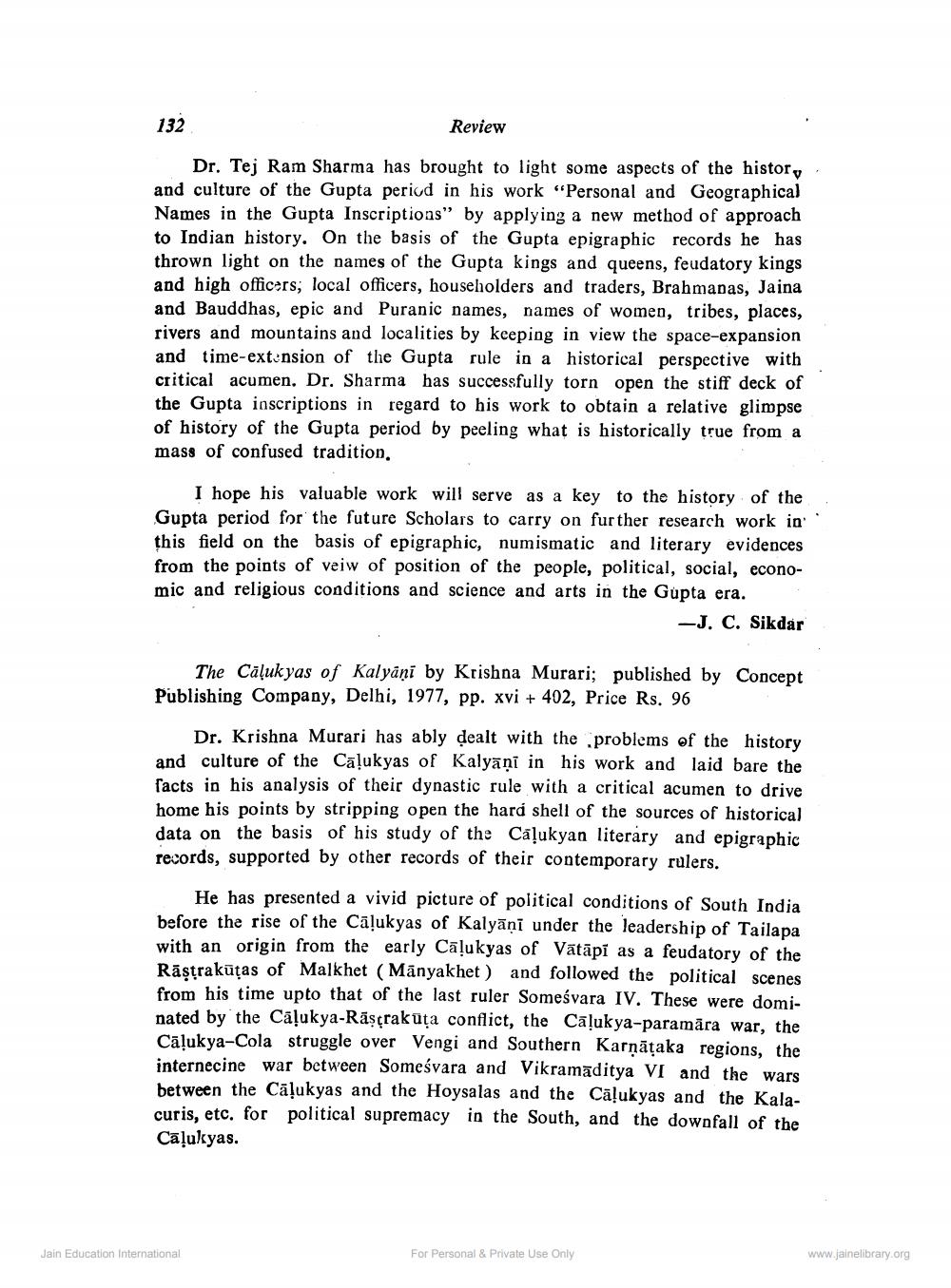________________
132
Review
Dr. Tej Ram Sharma has brought to light some aspects of the histor and culture of the Gupta period in his work “Personal and Geographical Names in the Gupta Inscriptions" by applying a new method of approach to Indian history. On the basis of the Gupta epigraphic records he has thrown light on the names of the Gupta kings and queens, feudatory kings and high officers, local officers, householders and traders, Brahmapas, Jaina and Bauddhas, epic and Puranic names, names of women, tribes, places, rivers and mountains and localities by keeping in view the space-expansion and time-extension of the Gupta rule in a historical perspective with critical acumen, Dr. Sharma has successfully torn open the stiff deck of the Gupta inscriptions in regard to his work to obtain a relative glimpse of history of the Gupta period by peeling what is historically true from a mass of confused tradition,
I hope his valuable work will serve as a key to the history of the Gupta period for the future Scholars to carry on further research work in this field on the basis of epigraphic, numismatic and literary evidences from the points of veiw of position of the people, political, social, economic and religious conditions and science and arts in the Gupta era.
-J. C. Sikdar
The Cāļukyas of Kalyāņi by Krishna Murari; published by Concept Publishing Company, Delhi, 1977, pp. xvi + 402, Price Rs. 96
Dr. Krishna Murari has ably dealt with the problems of the history and culture of the Cāļukyas of Kalyāņi in his work and laid bare the facts in his analysis of their dynastic rule with a critical acumen to drive home his points by stripping open the hard shell of the sources of historical data on the basis of his study of the Cālukyan literary and epigraphic records, supported by other records of their contemporary rulers.
He has presented a vivid picture of political conditions of South India before the rise of the Cāļukyas of Kalyāni under the leadership of Tailapa with an origin from the early Calukyas of Vätāpi as a feudatory of the Rāstrakütas of Malkhet (Mänyakhet) and followed the political scenes from his time upto that of the last ruler Someśvara IV. These were dominated by the Cāļukya-Rāşçrakuța conflict, the Cālukya-paramāra war, the Cālukya-Cola struggle over Vengi and Southern Karnataka regions, the internecine war between Someśvara and Vikramaditya VI and the wars between the Cāļukyas and the Hoysalas and the Cāļukyas and the Kalacuris, etc. for political supremacy in the South, and the downfall of the Cāļukyas.
Jain Education International
For Personal & Private Use Only
www.jainelibrary.org




